By William Stroock
In late 1979, the Democratic Republic of Afghanistan was torn apart by a civil war pitting the weak Communist government of Hafizullah Amin against several moderate and fundamentalist Muslim rebel armies. The war had been brought about by Amin’s incompetence and corruption, his vicious program of political repression, the massacre of entire village populations, and a ham-handed agrarian “reform” program that disenfranchised tribal leaders. Fearing that Amin would be defeated and replaced by a government of Muslim fundamentalists or—even worse—pro-American intellectuals, the Soviet Union launched an invasion on Christmas Eve aimed at removing Amin and replacing him with a more reliable strongman.
To pave the way for the invasion, Soviet advisers with the Afghan Army tricked their clients into incapacitating themselves. In one case, the Soviets told an Afghan armored unit that new tanks were about to be delivered but that, due to shortages, the gas in the old tanks would have to be siphoned out. The Afghans obligingly siphoned gas out of their tanks, rendering them useless. In another instance, Soviet advisers told an Afghan unit to turn over all their ammunition for inspection, something that likewise was done without question.
A Former Prime Minister Declares Himself President
By the time the first Soviet transport planes landed at Kabul airport carrying elements of the 103rd Guards Airborne Division, the Afghan Army was largely incapable of fighting back. On December 27, the Soviet 5th Motorized Rifle Division rolled across the borders toward Herat, Shindahd, and Kandahar, while the 108th Motorized Rifle Division drove on Kabul. The 201st Motorized Rifle Division advanced toward Kunduz. That same day, Soviet troops captured the Kabul radio station and attacked the presidential palace, killing Amin. In a radio address broadcast from the Soviet Union, former prime minister Babrak Karmal, who had been handpicked by Soviet authorities, declared himself president.
The DRA army had an impressive strength on paper, numbering 13 infantry divisions and 22 independent brigades. There were also 40 separate regiments. This force was composed of at least 70 percent conscripts, including thousands of men who had been rounded up by government press-gangs and forced to serve in the army. What few volunteers there were usually became junior and noncommissioned officers. Despite the press gangs and financial incentives to volunteer, DRA army units were badly under strength, sometimes by as much as 40 percent. The army was decimated by desertions and riddled with mujahideen spies. Supplementing the army was the KHAD, or secret police, numbering 100,000 men.
Hope for Stabilizing the Region Was Failing
Soviet planners had hoped that the invasion and coup would stabilize the situation enough for the DRA army to take control. In fact, their strong-armed tactics devastated morale in the Afghan Army and led to further desertions and defections. Even worse, enraged mujahideen took to the field and engaged Soviet forces in open battle outside Kandahar, in Jalalabad, and along the Salang highway. After the Soviets’ massive firepower overwhelmed them, the mujahideen retreated into the mountains along the Afghan border and switched to guerrilla-style tactics. The Soviets followed.
The Red Army deliberately waged war on Afghan civilians and drove them over the border into Pakistan. By doing so, they hoped to deny the mujahideen local support and a native population to hide among. In 1980, the Soviets mounted a large-scale offensive into the Kunar Valley that resulted in the expulsion of nearly all of the valley’s 150,000 residents. A similar offensive was undertaken to the south in the Sultani Valley. Supporting these Soviet attacks were clearing operations south of Kabul and around Kandahar that destroyed dozens of villages. Similar operations were launched throughout the country in 1981, but with little long-term success.
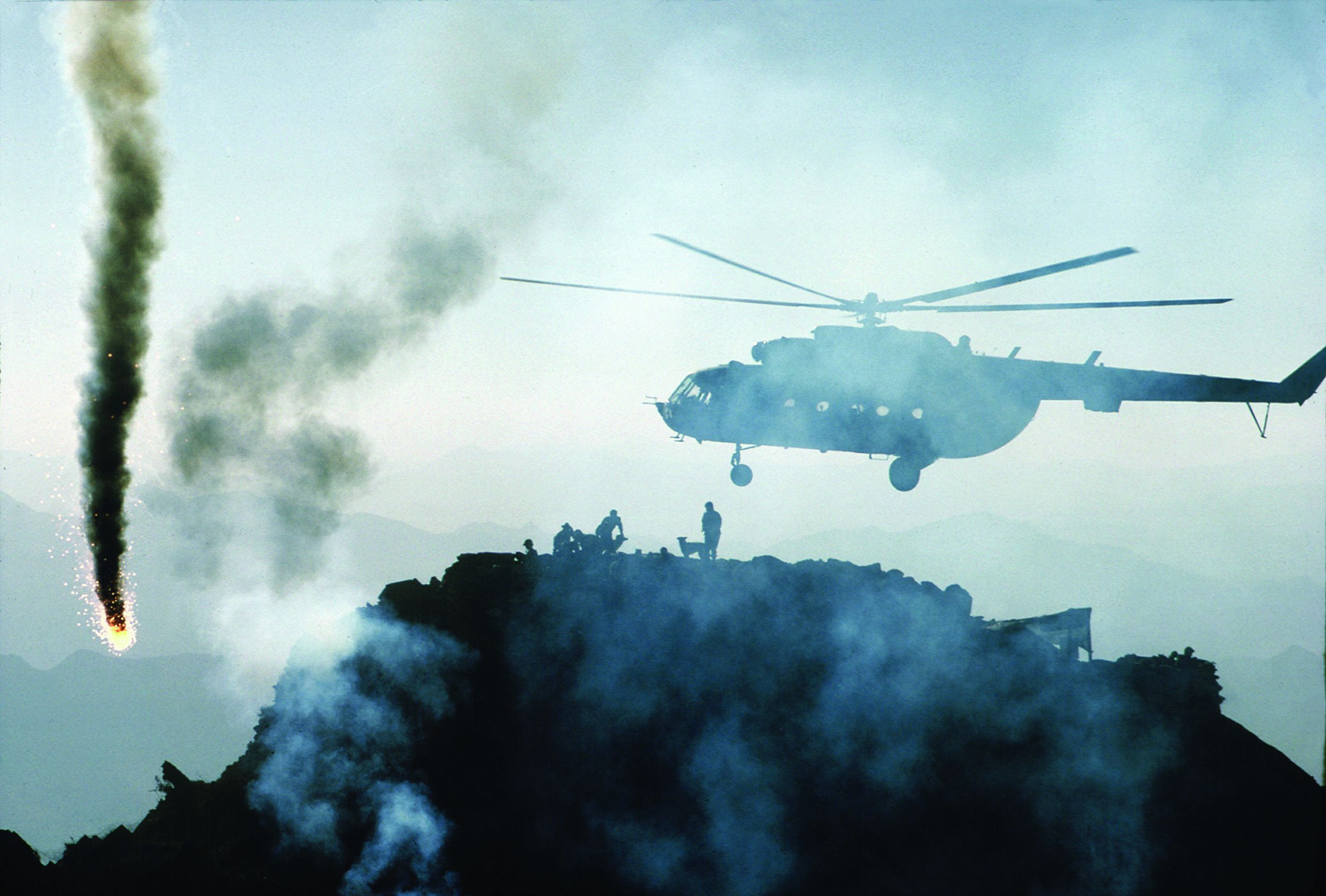
Guerrilla Attacks and Civilian Casualties
In the face of the Soviet onslaught, mujahideen forces retreated into the mountains or melted into a population made friendly by repeated Soviet and Afghan Army atrocities. When the mujahideen did come out and fight, they subjected Soviet forces to a constant stream of guerrilla attacks. DRA troops were no match for the mujahideen. In daring assaults in April and September of 1981, the mujahideen temporarily seized Kandahar from DRA forces and left only after the Soviet Air Force bombed them. Compounding anti-Soviet sentiment brought about by the Red Army’s complete disregard for Afghan civilian casualties was the brutality of the common Soviet soldiers, who regularly took out their frustration on the Afghan populace. An Afghan farmer passing through a Soviet roadblock could count upon his valuables being stolen and his wife being raped. Mounted Soviet troops seemed to take great joy in shooting at Afghans along the road. Soviet advisers, officers, and NCOs treated their Afghan proxies with contempt.
The frustration of the Soviet fighting man was easy to understand. Soviet soldiers were conscripts who often received only three weeks of basic training before being sent to savage Afghanistan. Once there, a new recruit was bullied by veteran soldiers and brutal NCOs. Soldiers were badly paid, ill fed and clothed, and lived in tents. Many soldiers found relief from their situation in the form of the opium or locally produced alcohol. Hungry conscripts sometimes traded their weapons to the Afghans for food. Fevers and infections caused by unsanitary camp conditions decimated thousands of Soviet recruits.
Hills Swarming With Mujahideen
Despite the Soviets’ various campaigns of annihilation, the hills outside the major Afghan cities were swarming with mujahideen. Soviet army units were confined to their bases and traveled only on the main roads. Traveling at night in anything other than a large convoy was suicidal. The Soviets, like their American counterparts in Vietnam, were heavily reliant on helicopters for movement through the hostile countryside. Also mirroring the American approach in Southeast Asia, the Soviets used only a bare fraction of their military might, refusing to delegate more men and material than were absolutely necessary. They even went so far as to call the 40th Army in Afghanistan a “limited contingent of forces.”
By 1981, the mujahideen numbered as many as 150,000 fighters organized into seven main Sunni Islam parties. Three Islamic fundamentalist organizations had roots reaching back to the 1960s, and a fourth group formed in 1982 to serve as an umbrella organization and raise money for the cause throughout the Islamic world. There were also three “moderate” parties. These were formed after the 1978 coup, and although not as radical as the other four groups, they were still Muslim organizations. There were also three smaller Shiite groups with ties to Iran.
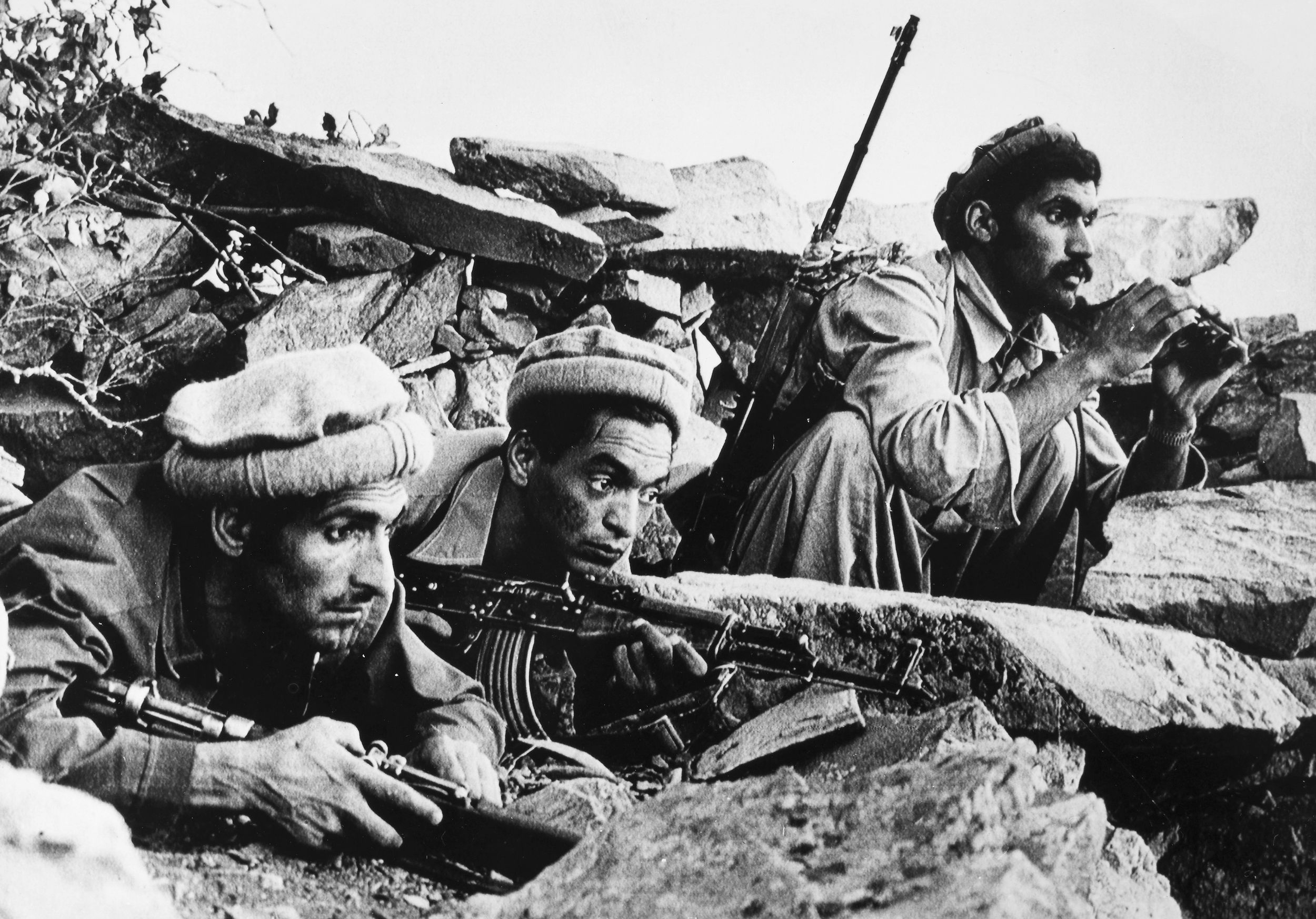
Excellent Fighters, but Poor Soldiers
The average mujahideen fighter was an illiterate farmer or herder. Although they were excellent fighters, mujahideen tended to be poor soldiers. They disliked field craft, were reluctant to crawl even when under fire, and were often unwilling to conduct sabotage missions, as these were not seen as glorious and honorable. They were terrified of Soviet land mines, which often maimed rather than killed—the former being considered a fate worse than death. Mujahideen saw firearms as a status symbol, and most were excellent shots. They took great pride in their centuries of tribal warfare and raiding, and consequently they believed that they had little to learn from Pakistani and Western advisers about how to fight a modern superpower.
In 1982, the closest thing the mujahideen had to a central command was the Afghan Bureau of the Pakistani Inter-Services Intelligence agency, or ISI. Led by General Mohammed Yousaf, the Afghan Bureau operated numerous training camps in the border area, provided advisers from the Pakistani Army, and funneled supplies to the mujahideen. These were provided by the American Central Intelligence Agency, which bought weapons from sellers all over the world, including China, Egypt, and, ironically, Israel, which sold equipment it had captured during the various Arab-Israeli wars. The Afghan Bureau also tried to coordinate mujahideen attacks. This inevitably led to conflicts. Afghan leaders were interested in disrupting Soviet supply lines and sabotaging infrastructure, while mujahideen commanders wanted to engage Soviet troops in open combat. Still, some highly valuable and successful attacks were carried out. In one bold raid, mujahideen fighters loyal to Ahmad Shah Massoud fought their way onto Bagram Air Base, attacked Soviet barracks packed with sleeping troops, and hit the airstrip, destroying 23 aircraft. They then retreated to their bases in the nearby Panjshir Valley.
Ahmad Shah Massoud
In the aftermath of the airport raid, the Soviets launched a massive counteroffensive against the Panjshir Valley designed to destroy mujahideen forces and install permanent DRA army garrisons there. The Panjshir Valley juts out from the Hindu Kush, pointing like a dagger at Kabul and Bagram Air Base. The Salang highway, the road over which 90 percent of the Soviets’ supplies were carried, went right past the valley entrance. Running through the valley is the Panjshir River. The banks were dotted with villages, farms, and vineyards. Dozens of canyons were home to small, isolated villages. At the beginning of the war, some 100,000 people of Tadjik origin resided there.
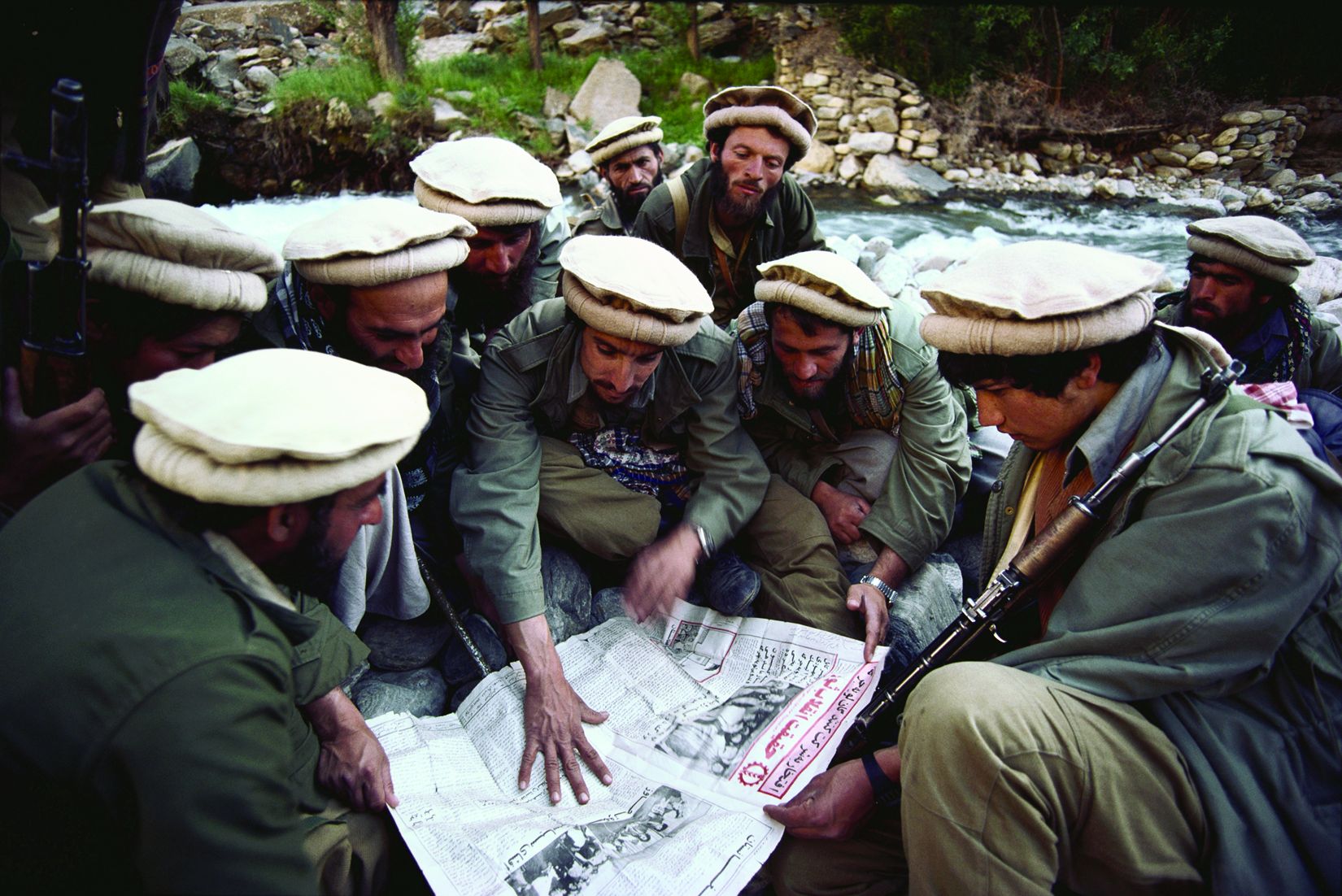
The valley was also home to the mujahideen’s most feared commander, Ahmad Shah Massoud. Born in 1953 in Herat, Massoud was part of Afghanistan’s minuscule educated class, having attended the French-run Lycee Istaqlal and the Russian Polytechnique Institute (both located in Kabul) where he studied engineering. Massoud was an accomplished athlete, voracious reader, and spoke French, Pashto, and Dari. During his time in Kabul, he became politically active, joining the Jamiat-e Islami party. When Mohammad Daoud seized power in 1974, Massoud fled to Pakistan, where he underwent military training and studied the art of war, particularly the campaigns of Mao Zedong, Che Guevara, and North Vietnamese General Vo Nguyen Giap. He returned to Afghanistan in 1978 and began operations in the Panjshir Valley, quickly gaining a cadre of tough, loyal followers who waged a guerrilla war against DRA forces.By 1980, Massoud controlled the entire valley.
The Ambitious “Panjshir V”
Massoud’s rebel army was a pan-Afghan force numbering more than 3,000 Tadjiks, Pashtuns, Turkmen, and Uzbek fighters. He divided the valley into 25 field commands, each defended by a small unit called a sabbet. These were supplemented by a number of moutariks, or mobile companies. Each moutarik numbered about 75 men and was subdivided into platoons of three. Moutarik fighters received extra rations and a welfare benefit for their families back home. Each unit had in its arsenal three machine guns, three RPG-7 grenade launchers, one mortar, and a ZPU-2 antiaircraft gun.
Panjshir V, as the Soviet operation was called, was ambitious. At the valley entrance, the Soviets deployed the 103rd Guards Airborne Division, the 66th Separate Motorized Rifle Brigade, one regiment from the 108th Division, one regiment from 201st Division, the 345th Parachute regiment, and elements of the 866th and 181st Separate Motorized Rifle Regiments. There were also significant DRA forces, four infantry regiments, and parts of the 37th Commando Brigade. Under the Soviet plan, heliborne troops from the 103rd Guards Airborne Division would seize villages and hilltops throughout the valley and pin down mujahideen fighters. At the same time, Soviet/Afghan motorized forces would advance along both banks of the Panjshir River. In this way, the Soviets hoped to bring Massoud’s army to battle and destroy it in detail. To mislead Massoud as to the actual target, a diversionary attack would be launched against the Ghorband district to the north.
The Panjshir V campaign began on May 15, 1982. The diversionary attack against Ghorband succeeded in fooling Massoud, who sent significant reinforcements to the Ghorband district in Parwan Province. The next night, several Soviet reconnaissance companies advanced to the valley’s entrance; lead elements of 108th Division advanced a short way into the valley. On the morning of May 17, the Soviets unleashed a massive aerial and artillery strike up and down the Panjshir Valley. Then Soviet heliborne troops landed at key high points. Even though Massoud was surprised by the move, his forces, armed with numerous ZPU-2 antiaircraft guns, managed to shoot down two helicopters and damage several others. There was also severe fighting for control of the landing zones, but the Soviets had put dozens of gunships in the air, and the mujahideen were outgunned and had to withdraw. In all, the six Soviet battalions were inserted.
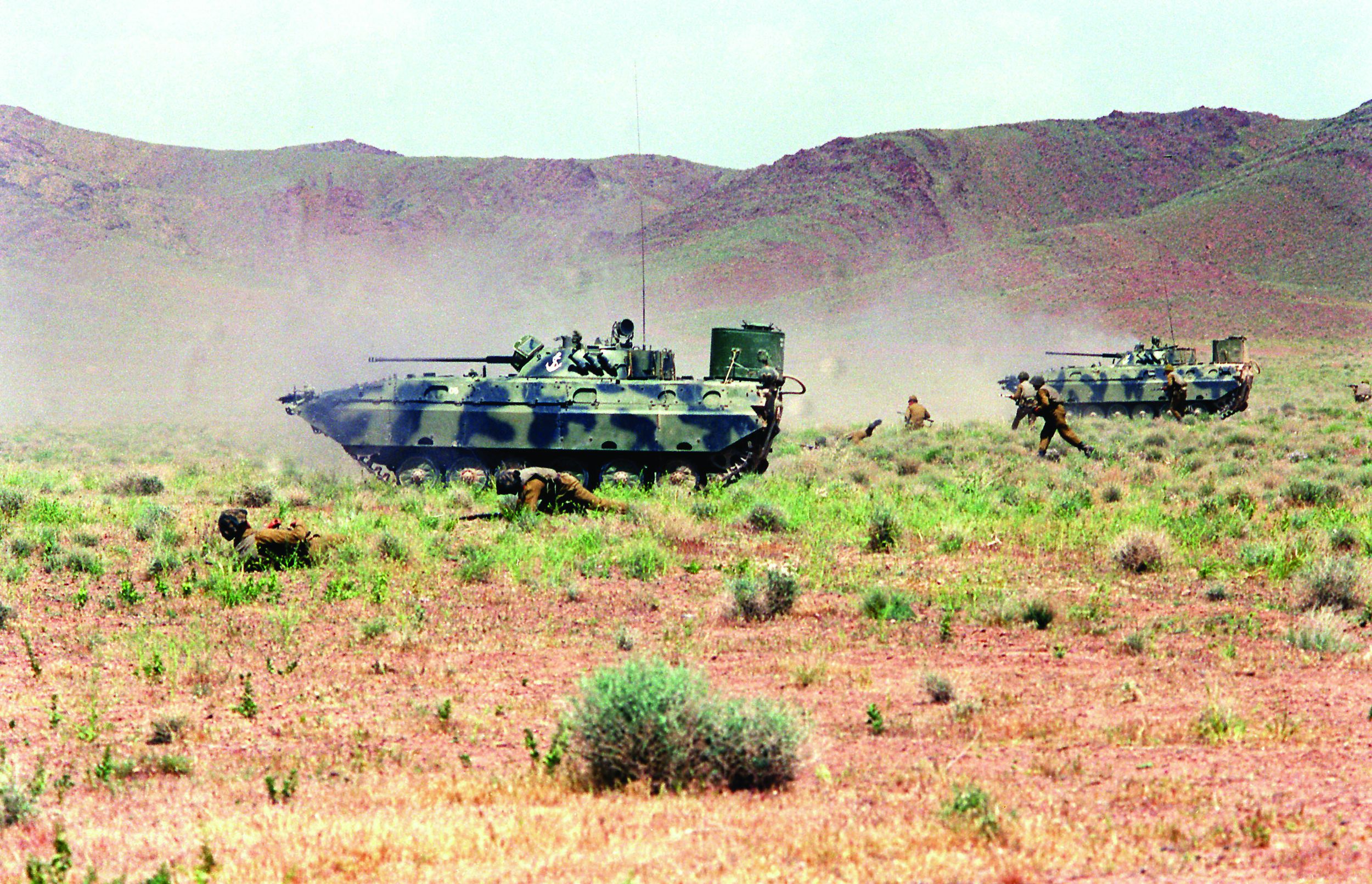
In the meantime, elements of the 108th Division slowly advanced up the valley along a battalion-wide front. The vanguard encountered a never-ending stream of man-made obstacles and land mines that had to be cleared by engineers and sappers deployed up front. The mujahideen engaged the lead forces, sparking fierce and lopsided clashes as Soviet firepower and close air support were brought to bear. There were dozens of small engagements as well, as Soviet forces cleared out the numerous canyons running out from the valley. In contrast to the pounding they were giving Soviet troops, the mujahideen left DRA troops largely alone. This encouraged defections, so many that the Soviets had to pull several DRA units out of the valley.
In an effort to trap mujahideen forces engaging elements of the 108th Division on the second day of the advance, one Soviet and one Afghan battalion landed at the village of Mata, halfway up the valley. Mujahideen forces there were quickly overcome, allowing the combined Soviet/DRA force to occupy the heights above the village. The next day, a similar force landed at Astana, and on the 22nd two Soviet and two Afghan battalions landed at Evim, 60 miles inside the valley at an important crossroad through which the mujahideen received supplies and reinforcements. The Evim operation was the scene of particularly heavy fighting as Massoud did not want a large enemy force on the ground so far up the valley. After sundown, several moutariksconverged on the landing zone and launched a determined assault on Soviet/DRA forces there. The assaults were repelled with heavy losses.
Although impressive on paper, the landings did not prevent mujahideen forces from continuing to move at will throughout the valley. They knew the terrain too well and could move at night. Nor did the heliborne insertions keep the mujahideen from withdrawing before a Soviet advance. Massoud’s moutarikshad ample warning, as any Soviet attack was preceded by an artillery barrage lasting up to half an hour. After the barrage, the moutarikswould pull back to a prepared position farther up the valley while a small rear guard sniped at the advancing column. Such tactics resulted in a steady trickle of Soviet casualties and vehicle losses and ensured that the moutarikssurvived to repeat the process.
The battle for Evim marked the end of Panjshir V. On May 25, Soviet forces began a gradual withdrawal to Bagram, completing it three days later. Control of the valley was handed over to DRA units, but their bases were gradually overrun by the mujahideen. The Soviets returned to the valley in September and, after another impressive show of force, once again left DRA forces in control. By the end of the year, however, Massoud’s forces regained effective control of the valley. In all, Panjshir V cost the Soviets 2,000 casualties, 17 tanks, and a dozen aircraft. DRA losses totaled 1,200, including numerous defectors. The mujahideen lost 180 fighters. The civilian toll was much greater. In 1983, Massoud signed a truce with the Soviets. By agreeing to a cease-fire, Massoud allowed his forces a chance to rest and re-arm. Other mujahideen commanders were furious, since the unilateral truce freed up Soviet forces for operations against them.
The Soviets returned to the Panjshir Valley in 1984. Informers in Kabul tipped the ISI, who informed Massoud and sent emergency supplies to him. The Soviet offensive began on April 20 with a massive high-altitude bombardment by TU-16 bombers. This was supported by SU-24 medium bombers that struck individual targets. After the air strikes, which did little more than bounce the rubble and announce the coming attack, the 108th Motor Rifle Division, along with the 8th and 20th Afghan Infantry Divisions, moved into the valley. They advanced in typical Soviet fashion, with a long artillery barrage preceding every movement. As the divisions made their way up the valley, airborne battalions landed behind villages and other suspected mujahideen strongpoints. The raids netted few prisoners—Massoud’s fighters simply avoided the valley floor and sniped at the ponderous Soviet column from surrounding hilltops.
Under such conditions, it took the 108th MRD eight days to advance 50 miles to the village of Khenj. In the second part of the operation, several Soviet airborne battalions helicoptered into the valley’s side canyons in an attempt to cut off the mujahideen line of retreat. In one instance, a Soviet battalion landed at the village of Dash-i-Ravat, 13 miles beyond the main advance. On a hilltop deep inside mujahideen territory, the battalion was badly exposed. Several moutariks converged on the landing area and inflicted heavy casualties on the isolated paratroopers. By May 7, the Soviets felt that they had accomplished all of their objectives and gradually began withdrawing, again leaving DRA garrisons at various spots along the valley. These were highly vulnerable, and troops had to be resupplied by air.
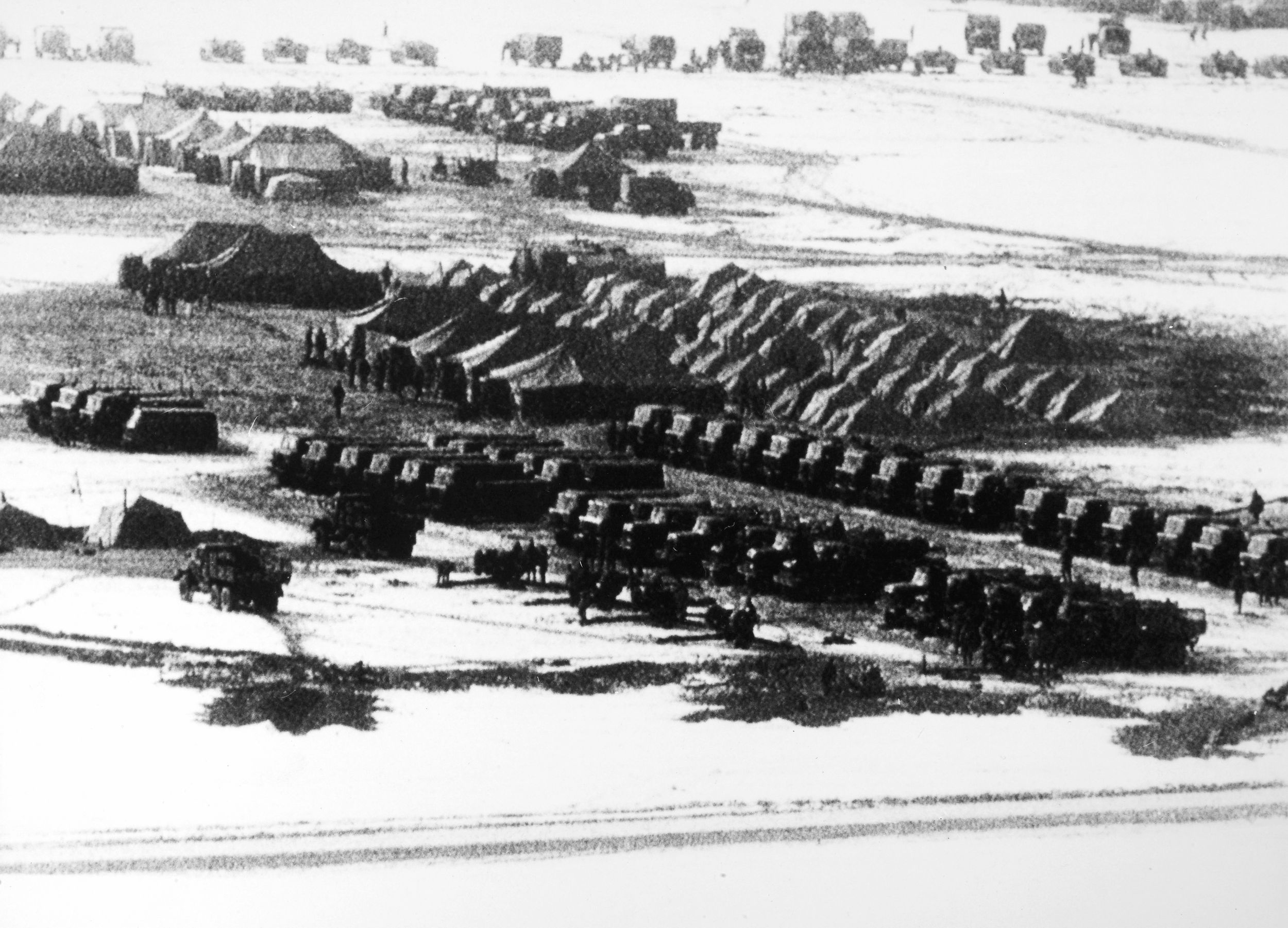
In June 1985, Massoud’s forces attacked the DRA base at Peshghor. In a dawn attack, they penetrated the base’s minefield and stormed the defenses under cover of a rocket and mortar barrage. Afghan resistance collapsed. Massoud captured more than 400 prisoners, including five DRA colonels from Kabul.
When Mikhail Gorbachev took power in the Soviet Union in 1986, he announced plans for a phased withdrawal from Afghanistan, which he famously called “a bleeding wound.” Such a withdrawal required the DRA army to take the lead against the mujahideen. The Ministry of Defense decided to launch an operation aimed at destroying the massive mujahideen facility at Zhawar Kili. Although planned by the Soviets, the assault would be a largely DRA operation, with the 7th, 8th, 14th, and 25th Infantry Divisions, the 38th Commando Brigade, and the Soviet 666th Air Assault Regiment in support. The attack was commanded by Afghan General Mohammed Delavar.
Zhawar was the center of mujahideen activity in Paktika Province; through it flowed 20 percent of the mujahideen supplies. It was the site of an 11-cave storage facility housing a barracks, hospital, mosque, and electrical power plant. Zhawar fell under the purview of Jalaluddin Haqqani, a mujahideen commander loyal to the fundamentalist Hezb-Islami party. Haqqani was regarded as a competent and brave leader, a favorite of the ISI and the United States. As such, he received millions of dollars in military aid, including the much-vaunted Stinger missiles. Haqqani had stationed at Zhawar a permanent regiment of 500 fighters supported by nine ZSU-1 and ZSU-2 antiaircraft guns, a dozen M-12 multiple rocket launchers and two T-55 tanks. Stationed north and east of Zhawar was a quartet of mujahideen units belonging to other parties. The complex lay south of Khost at the end of a canyon, a few miles from the Pakistani border. The main route to Zhawar was through the Manay Kandow Pass, whose entrance was dominated by the mountainous Dharwi Ghar. Atop Dhawri Ghar was a cave protected by a large overhang.
The DRA assault began on April 2. After a massive artillery barrage, a half dozen MI-8 helicopters landed a battalion of the 38th Commando Brigade east of Zhawar, unknowingly inside Pakistan. The battalion quickly came under heavy attack by the mujahideen, and Delavar decided to insert the rest of the brigade into the fight. Dozens of helicopters flew over the battlefield and landed Afghan commands on the heights east of Zhawar. The mujahideen shot down three helicopters and destroyed several more on the ground. Haqqani’s fighters attacked the landing zones, over-running four. He also brought in reinforcements from Pakistan. The combined force enveloped and pounded the trapped commandos, killing dozens and capturing nearly 600.
In the meantime, Soviet bombers pounded the cave complexes, collapsing the entrances to a pair and trapping more than 150 mujahideen, including Haqqani who, although badly wounded, managed to escape. For three days DRA forces, the 7th Infantry Division in the west and the 8th Infantry Division in the east, tried and failed to blast their way through the mujahideen positions. After suffering heavy casualties and exhausting their ammunition, the two divisions pulled back. In their place, the 14th and 25th Infantry Divisions moved up and attacked mujahideen fighters holding Manay Kandow Pass. This attack, too, went nowhere as mujahideen inside the caves were invulnerable to air and artillery strikes. After 10 days of fruitless efforts, Delavar called off the attack.
While artillery and aircraft pounded the region, the DRA resupplied and reinforced its exhausted units. Delavar was sacked. The offensive was restarted on April 17 with a two-pronged assault; the 25th Infantry Division advanced on the east while the 14th Infantry Division moved on the west. Like its predecessor, the 25th Infantry Division encountered heavy resistance. DRA commanders finally decided to forgo the standard massive artillery preparation in favor of a snap attack that took the mujahideen by surprise and swept them from the mountain. DRA forces pushed out to the east and outflanked the remaining mujahideen facing them. Haqqani was wounded again, and rumors that he had been killed demoralized the mujahideen.
With no one to rally the mujahideen forces, Zhawar fell later that day. DRA troops and Soviet advisers rigged the complex with explosives and destroyed the extensive stores. That night, the head of the Hezb-Islami party, Gulbuddin Hekmatyar, launched a counterattack, but patrols approaching Zhawar found the base abandoned. The battle had cost the mujahideen 100 dead, as well as the vast stores at Zhawar. The DRA lost 1,500 dead or wounded, 500 prisoners, and 13 aircraft. The base at Zhawar was back in mujahideen hands 48 hours after the DRA abandoned it.
By the beginning of 1989, the situation in Afghanistan had changed radically. The influx of American-supplied Stinger missiles had given the mujahideen a powerful weapon with which to counter Soviet/Afghan airpower. In Pakistan, President Zia ul-Haq and the head of the ISI had been killed in a plane crash. That February, the last Soviet forces withdrew from the country. The seven mujahideen parties formed an interim government in waiting. The alliance was eager to go on the offensive; its leadership felt that a large show of force would bring about the final collapse of the Communist regime. Their target was Jalalabad, at the foot of the Hindu Kush. Connecting it to the Khyber Pass to the east and Kabul 33 miles to the west, Highway 1 ran right through the city. A few miles east was the Kunar River; the Samarkel Ridge commanded the highway.
By taking the city, the mujahideen alliance hoped to demoralize the DRA and grab a swath of the country that they would declare “Free Afghanistan.” From there, they planned to go for the jugular and attack Kabul. The operation was carried out with the full approval of the new head of the ISI, General Hamid Gul. The DRA had plenty of time to prepare for the attack. Stationed in Jalalabad were the 11th Infantry Division and the 1st Border Brigade. The government had filled the ranks with replacements and stockpiled supplies in the city. The DRA units manned a formidable ring of defenses including concrete bunkers, minefields, and barbed wire.
Some 7,000 mujahideen gathered for the assault, with contributions from all seven of the major parties and an eighth group of well-equipped Arab jihadi led by a rich Saudi calling himself Abu Abdullah. His real name was Osama bin Laden. Other important contingents were personally led by Massoud and Gulbuddin Hekmatyar. Like Massoud, Hekmatyar had attended school in Kabul, where he studied engineering. In the mid-1970s, he founded the Hezb-Islami party, which sought to establish an Islamic caliphate in Afghanistan in the mold of Iran’s Ayatollah Khomeini, whom he greatly admired. Hekmatyar was virulently anti-Soviet, but also anti-American. Seeking to consolidate power, he had also waged war on other mujahideen parties. He was a bitter rival of Massoud.
The campaign began in early March 1989 with a mujahideen assault on Samarkel Ridge. Supported by a massive rocket and mortar barrage, the mujahideen took the ridge after three days of fighting. The mujahideen then fought their way into the village of Samarkel on the ridge’s western slope. The next target was Jalalabad airfield, which they attacked on March 8. There, the mujahideen went up against a battalion of crack DRA troops who held their ground in the face of several determined assaults. Advancing behind a line of T-55 tanks captured at Samarkel, the mujahideen finally managed to take the airport, but the DRA counterattacked later that day and retook it. Four days into the battle for the airport, a battalion of DRA Special Guards was flown in from Kabul. The frontal assaults continued until late March, with the mujahideen suffering more than 1,400 casualties. DRA forces lost 1,000.
Tired of seeing their fighters impaled on the defenses of Jalalabad, mujahideen commanders decided to starve the city into submission. Unfortunately for them, the siege was not airtight. Some commanders along the highway allowed convoys to slip through in exchange for a portion of the supplies. And since the DRA still held the airport, the Soviets were able to resupply government forces from the air. Mujahideen commanders also had difficulty coordinating attacks, with many unwilling to make the first move for fear their men would bear the brunt of the fighting. What attacks were carried out were badly exposed to Soviet high-level bombing and Scud missile attacks. By July, the mujahideen siege had collapsed. On July 6, the DRA launched a counterattack aimed of Samarkel Ridge, which they took two days later. In defeat, the rivalry between Massoud and Hekmatyar slipped into outright war, with the two parties fighting each other throughout the rest of the year.
The Communist regime in Kabul managed to stay in power until 1992, falling only after the Soviet Union itself broke up. A fractious mujahideen coalition led by the Jamaat-i-Islami failed to bring peace and was ousted by the Taliban in 1996. For the next five years, the Afghan resistance called the Northern Alliance was led by Massoud. He was assassinated on September 9, 2001—two days before the terrorist attacks on the World Trade Center in New York City. Haqqani became a minister in the Taliban government and, on September 29 he was appointed commander of Taliban forces. He fights on today out of Waziristan, having survived several American attempts to kill him. Hekmatyar still leads the Hezb-Islami party, which is closely allied with the exiled Taliban. He too has survived numerous assassination attempts.
Despite losing nearly 15,000 troops in a decade-long incursion, Soviet commanders never grasped the concept that, in order to defeat an insurgency, they first must win the loyalty of the civilian population. Their oafish tactics had the opposite effect. By forcing millions into refugee camps in Pakistan, they created a limitless pool of angry youth from which the mujahideen could recruit more troops. The war could never have been won so long as Pakistan remained a mujahideen safe haven. American and NATO forces in Afghanistan today confront exactly the same problem, and like their Soviet predecessors two decades ago, they have to date devised no workable solutions. The ravaged nation remains a bleeding wound in the seemingly endless war on terror. n
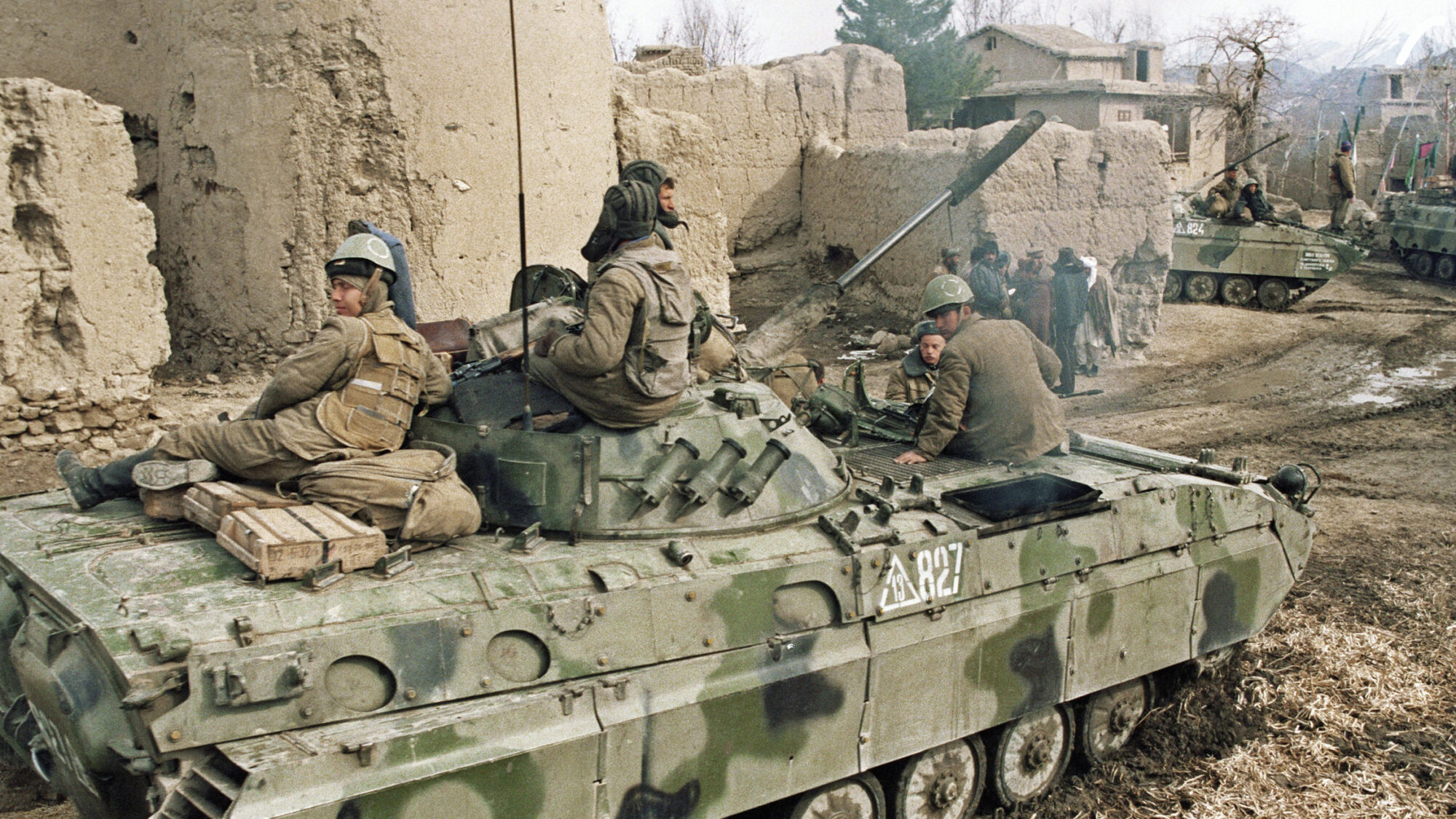
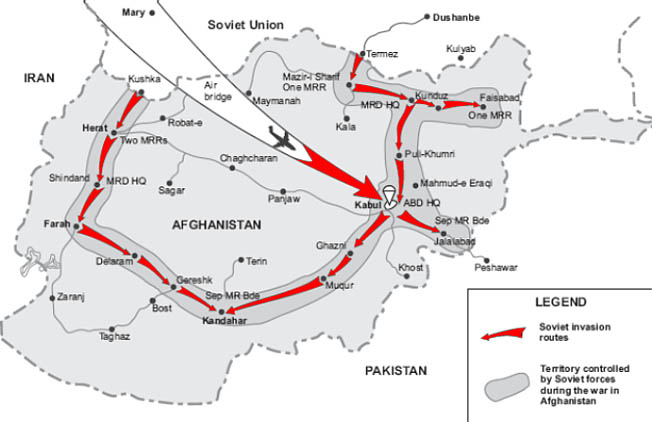


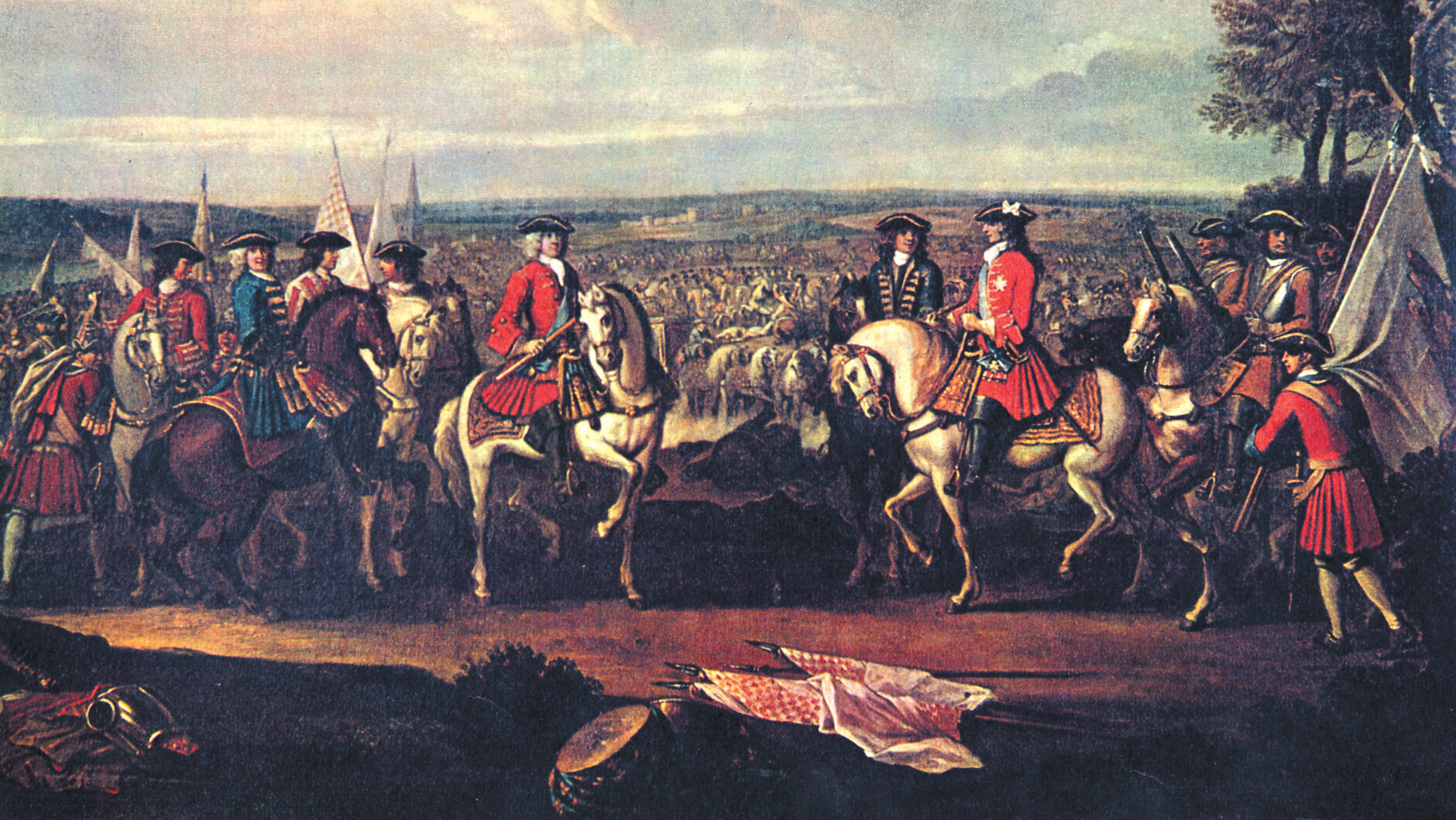
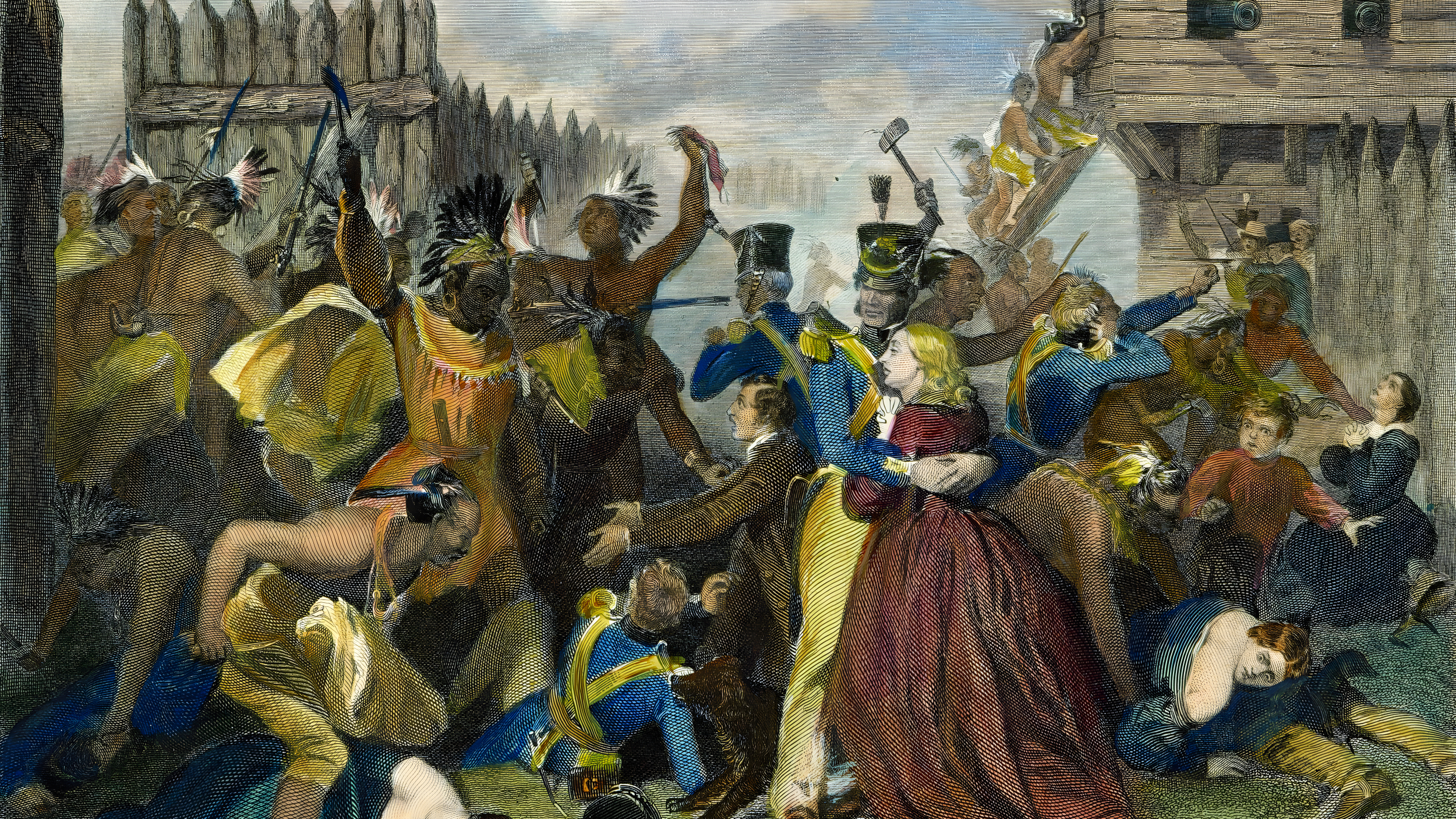
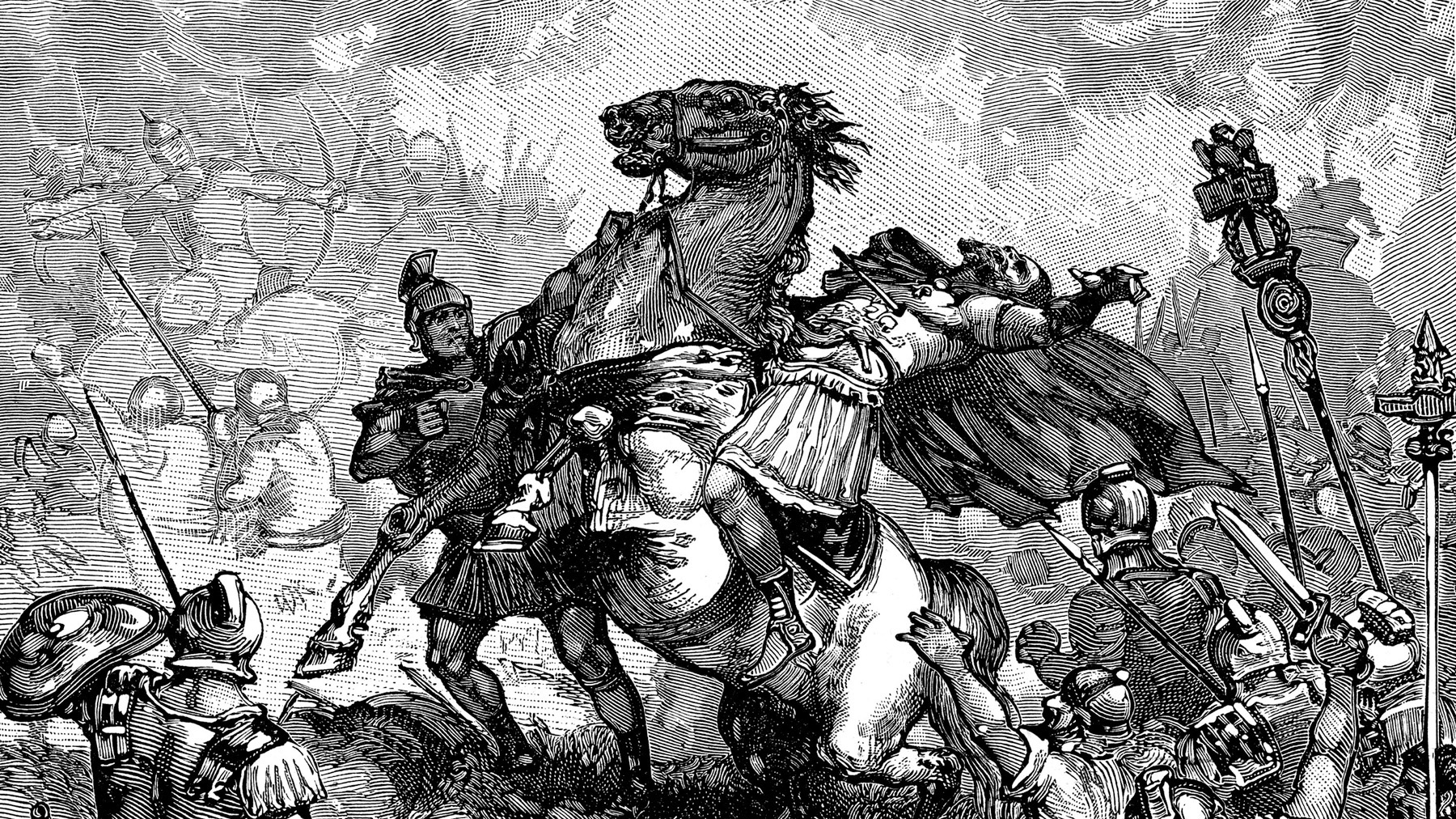
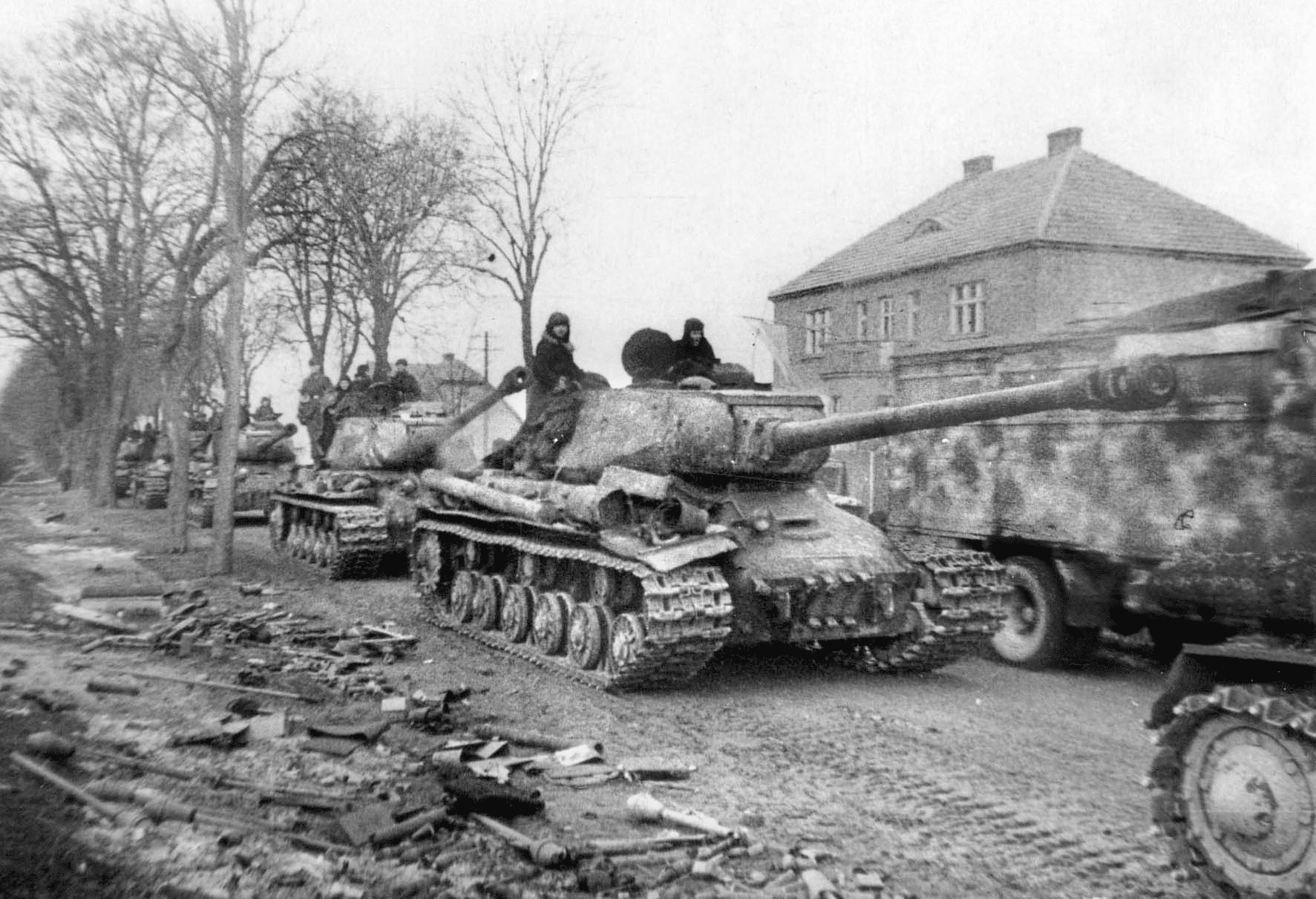
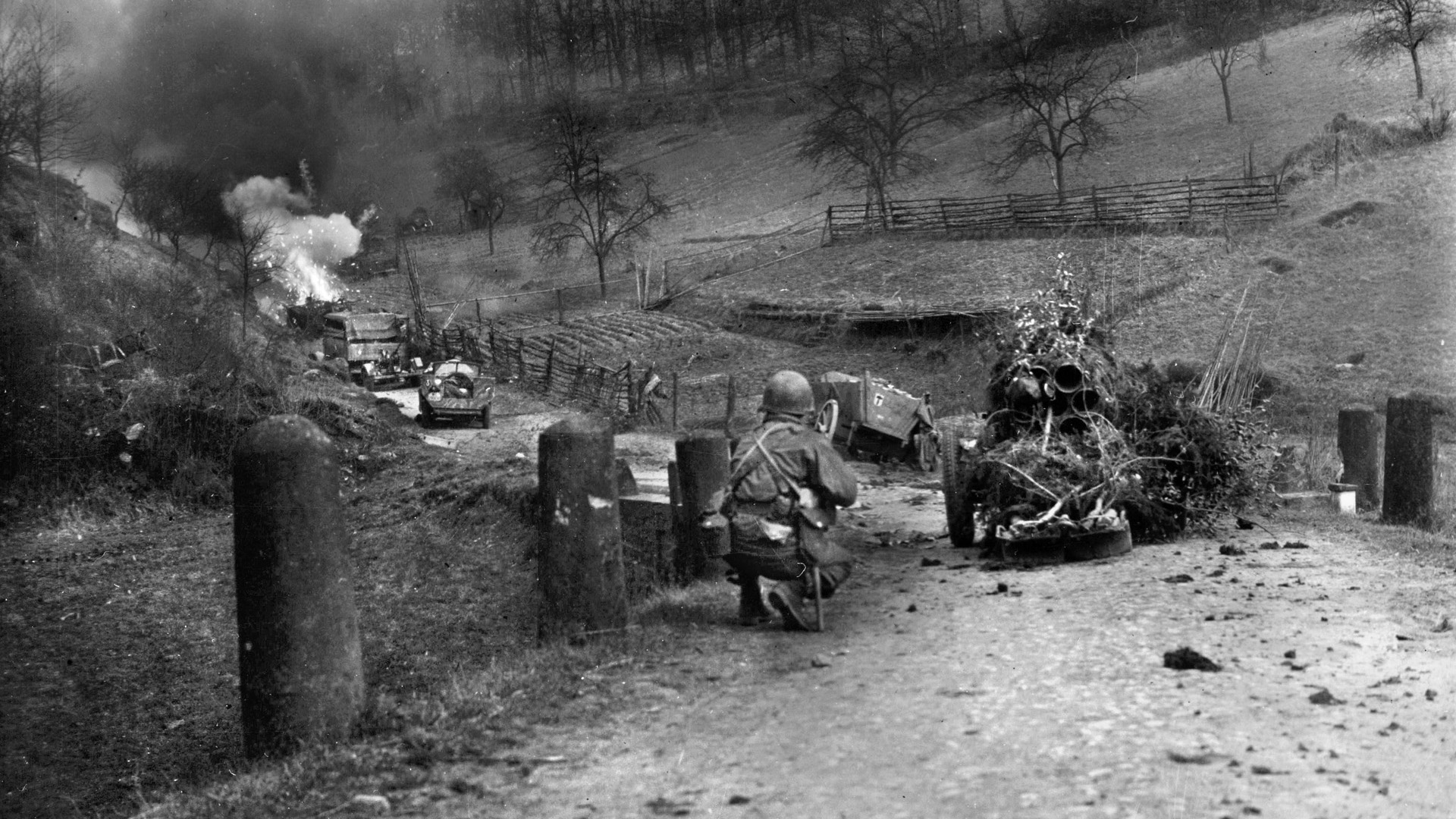
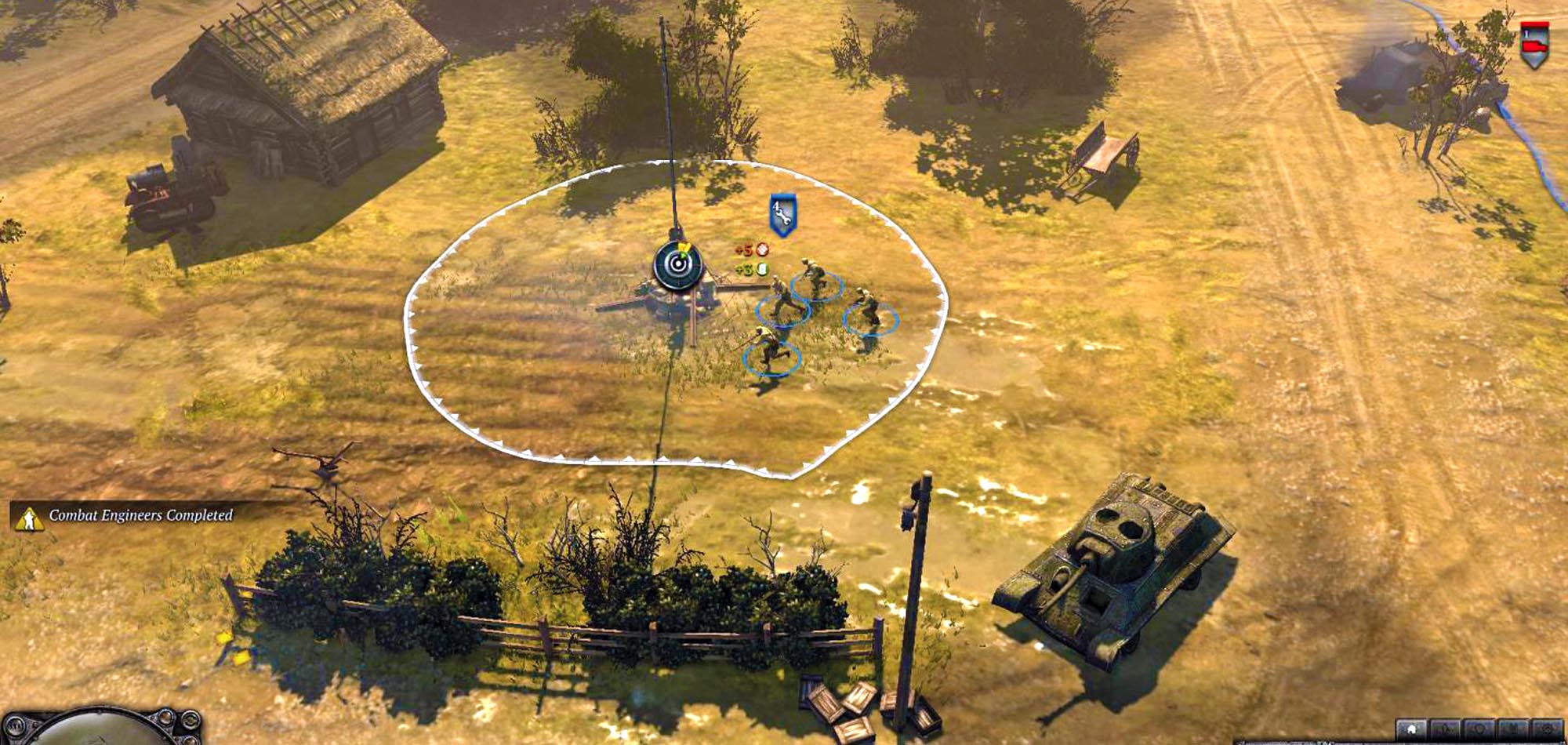
Join The Conversation
Comments
View All Comments